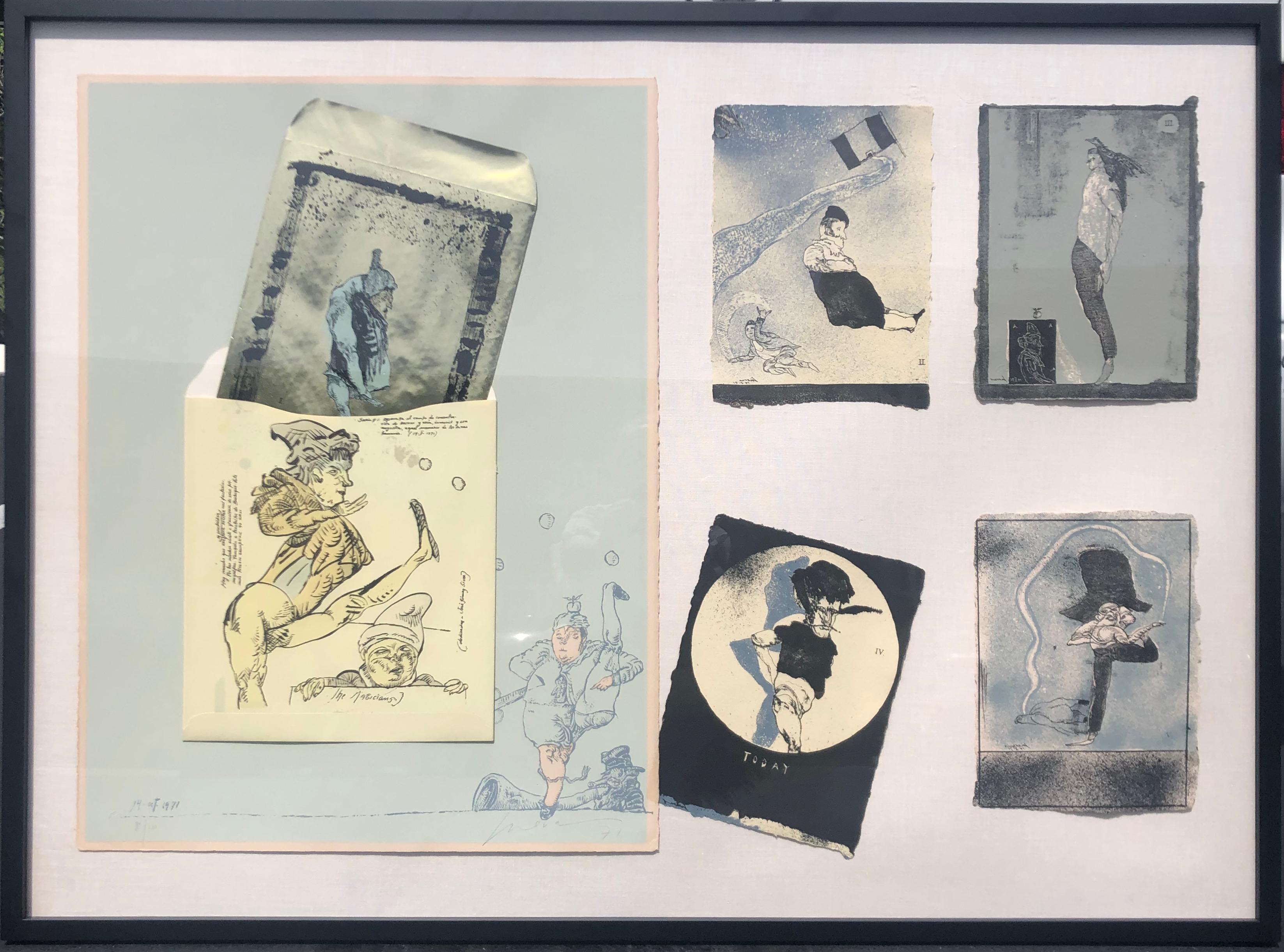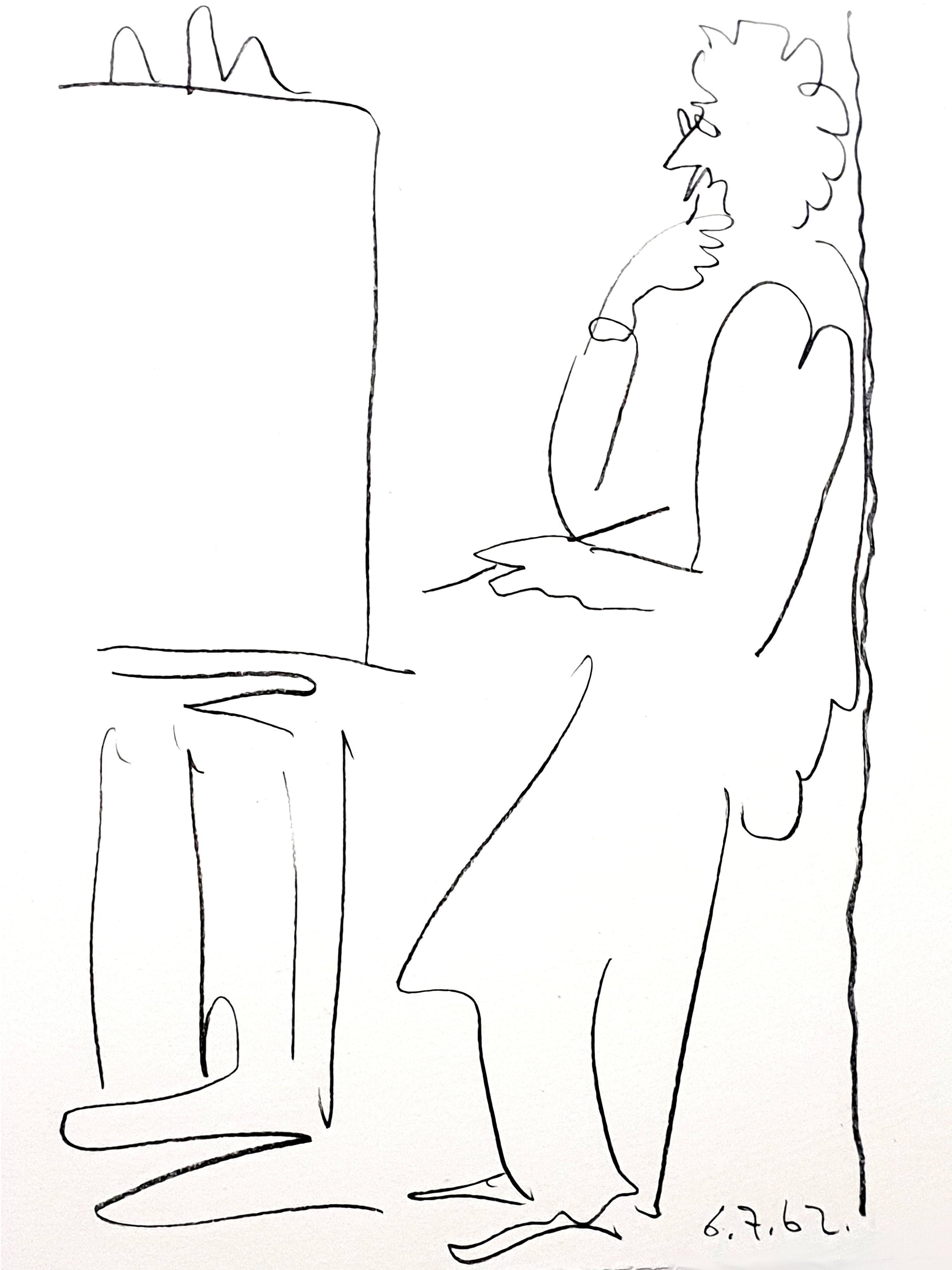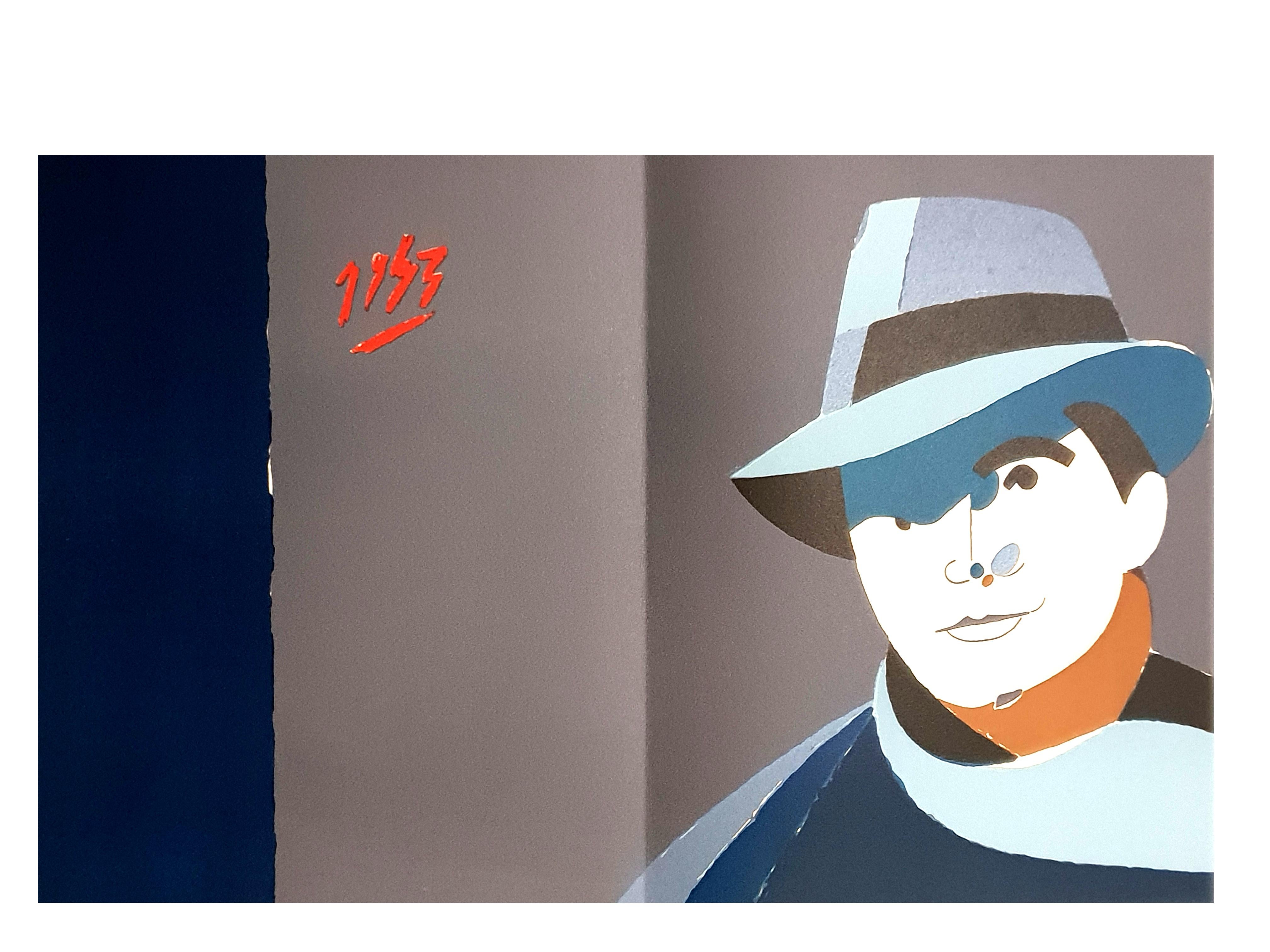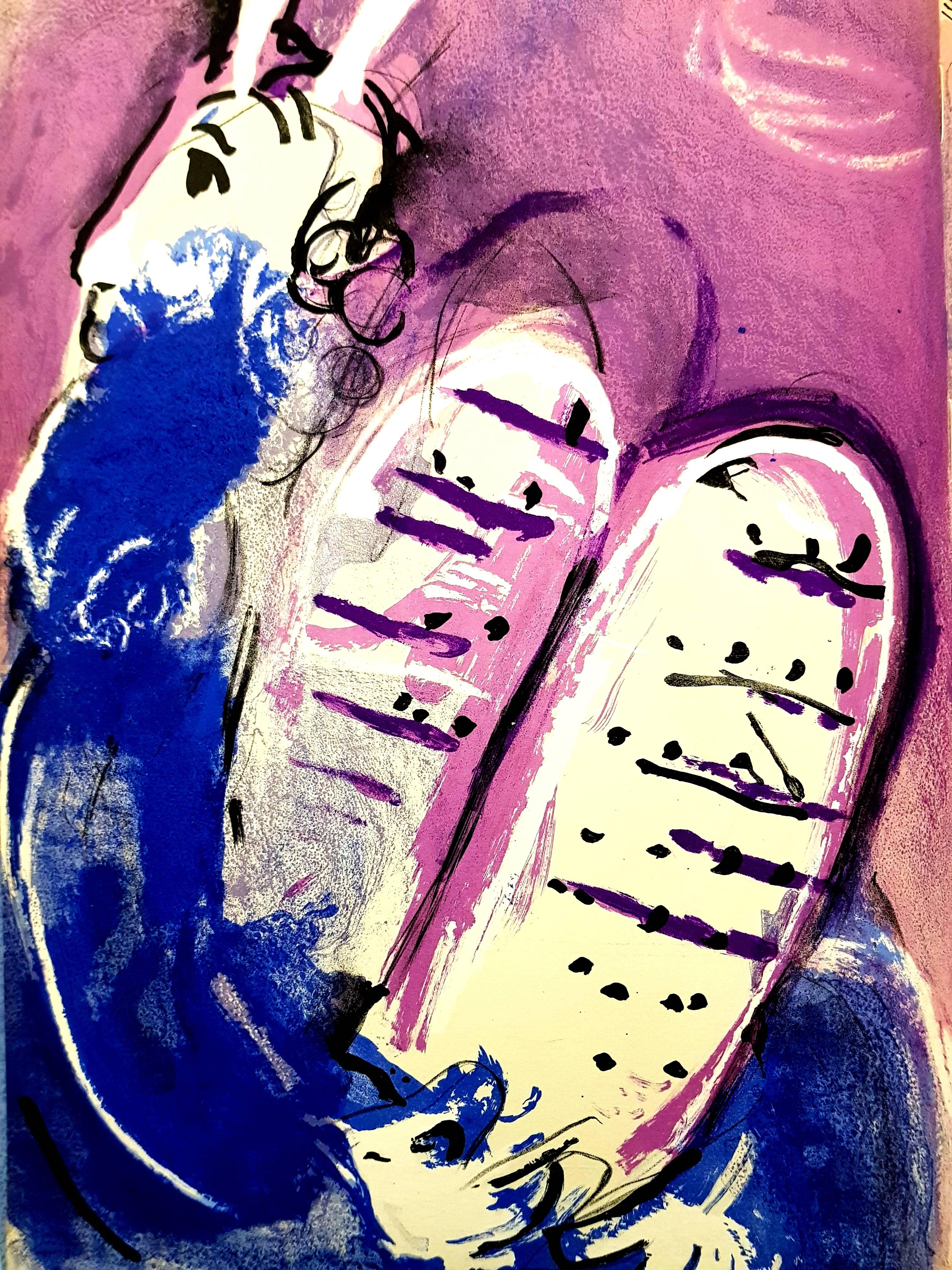Items Similar to Uses and Customs - Chinese - Lithograph - 1862
Want more images or videos?
Request additional images or videos from the seller
1 of 2
Various ArtistsUses and Customs - Chinese - Lithograph - 18621862
1862
About the Item
Uses and Customs - Chinese is a lithograph on paper realized in 1862.
The artwork belongs to the Suite Uses and customs of all the peoples of the universe: " History of the government, of the laws, of the militia, of the religion of all the nations from the most remote times up to the present day".
Good conditions with slight foxing
- Creator:Various Artists (Italian)
- Creation Year:1862
- Dimensions:Height: 9.85 in (25 cm)Width: 6.54 in (16.6 cm)Depth: 0.04 in (1 mm)
- Medium:
- Movement & Style:
- Period:
- Framing:Framing Options Available
- Condition:Insurance may be requested by customers as additional service, contact us for more information.
- Gallery Location:Roma, IT
- Reference Number:
undefined
About the Seller
4.9
Platinum Seller
These expertly vetted sellers are 1stDibs' most experienced sellers and are rated highest by our customers.
1stDibs seller since 2017
6,753 sales on 1stDibs
Typical response time: 2 hours
- ShippingRetrieving quote...Ships From: Monaco, Monaco
- Return PolicyA return for this item may be initiated within 14 days of delivery.
More From This SellerView All
- The Escape from Argyle Castle - lithograph by Richard Parks Bonington - 1826Located in Roma, ITThe Escape from Argyle Castle is original lithograph on paper, realized by the artist Richard Parkes Bonington (1802- 1828) Signed on the plate on the lower left and titled. Editor ...Category
1820s Modern Figurative Prints
MaterialsLithograph
- Insects - Pair of Original Lithographs by Emil Hochdanz- 1868-1869By Emil HochdanzLocated in Roma, ITInsect is an original pair of modern artwork realized in 1868-1869 by the German atist E. Hochdanz Hand watercolored lithograph. Printed on plate of both artworks: Art Anst.v E.Ho...Category
1860s Modern Animal Prints
MaterialsLithograph
- Flora and Fauna - Pair of Original Lithographs by Emil Hochdanz- 1869By Emil HochdanzLocated in Roma, ITFlora and fauna is an original pair of modern artwork realized in 1869 by the German atist E. Hochdanz. Hand watercolored lithograph. Printed on plate of both artworks: Art Anst.v ...Category
1860s Modern Animal Prints
MaterialsLithograph
- Insects - Pair of Original Lithographs by Emil Hochdanz- 1868By Emil HochdanzLocated in Roma, ITInsect is an original pair of modern artwork realized in 1868 by the German atist E. Hochdanz Hand watercolored lithograph. Printed on plate of both artworks: Art Anst.v E.Hochdan...Category
1860s Modern Animal Prints
MaterialsLithograph
- The Battle - Original lithograph by Richard Parks Bonington - Early 19th CenturyLocated in Roma, ITThe Battle is original lithograph "d'après" drawing of F.A. Pernot, realized by the artist Richard Parkes Bonington (1802- 1828) Signed on the plate on the lower left. Printed by V...Category
Early 19th Century Modern Figurative Prints
MaterialsLithograph
- A Duel Between Frank and Rashleigh -Lithograph by Richard Parks Bonington - 1828Located in Roma, ITA Duel between Frank and Rashleigh is original lithograph on china glued, realized by the artist Richard Parkes Bonington (1802- 1828) Signed on the plate on the lower left and titl...Category
1820s Modern Figurative Prints
MaterialsLithograph
You May Also Like
- Le Cirque (The Circus), from Cirque, 1967By Marc ChagallLocated in Palo Alto, CACreated in 1967, Marc Chagall’s Le Cirque (The Circus), from Cirque, 1967 is a color lithograph on Arches paper. This work is hand-signed by Marc Cha...Category
1960s Modern Figurative Prints
MaterialsLithograph
- The painter. 1943, paper, lithograph, 56x46 cmBy Marcel GromaireLocated in Riga, LVMarcel Gromaire (1892-1971) - The Painter. 1943, paper, lithograph, 56x46 cmCategory
1940s Modern Abstract Prints
MaterialsPaper, Lithograph
- The Magicians Message From Cuevas' ComediesBy José Luis CuevasLocated in Delray Beach, FLThe Magicians Message From Cuevas' Comedies. Screenprint with collage additions and five lithographs from a portfolio of ten lithographs (one with screenprint and embossing, one with embossing) and five screenprints (two double-sided, one with collage additions). Pencil signed and dated 1971, edition 84/100, blindstamp visible, published by Collector's Press, San Francisco. Framed under Plexiglas. Jose Louis Cuevas was born in Mexico City in 1933 -2017. A master draftsman, Jose Luis Cuevas played a pivotal role in Latin America's drawing and printmaking renaissance of the sixties and seventies. He is also associated with Latin America's neofigurative movement, along with artists such as Fernando Botero and Antonio Segui. By the age of fourteen, he had illustrated numerous periodicals and books and had had his first exhibition in Mexico City. In 1953 Cuevas published La cortina del nopal (The Cactus Curtain), an article condemning aspects of the Mexican Mural movement and advocating greater artistic freedom. This philosophy inspired the founding in 1960 of the group Nueva Presencia, which he joined for a brief time. It promoted individual expression and figurative art reflecting the contemporary human condition. Cuevas' work was influenced by the graphic art of Goya and Picasso as well as by Posada and Orozco, whose representations of deformed creatures, degraded humanity and prostitutes were of particular thematic interest. Over the years, he has paid homage to his favorite painters as well as writers, such as Dostoevsky, Kafka, Quevedo and Sade, in numerous series of drawings and prints. Cuevas has said that his drawing represents the solitude and isolation of contemporary man and man's inability to communicate. It is for this reason that he often distorts and transforms the human figure to the point of uniqueness. Cuevas has had solo exhibitions in museums and galleries throughout the world including the: University of Texas, Austin, 1961, the San Francisco Museum of Art, California,1970, the Museo de Arte Moderno, Mexico City, 1972, Museo de Arte Contemporaneo, Caracas, 1974, Phoenix Art Museum, Arizona, 1975, Musee d'Art Moderne, Paris, 1976. His work was included in Four Masters of Line: Jose Luis Cuevas, Alexander Calder, Stuart Davis, and Morris Graves, Musee de la Napoule, France, 1957 and in The Emergent Decade, Cornell University and Solomon R. Guggenheim Museum, New York, 1965. Among his many awards are First International Prize for Drawing, Biennial of Sao Paulo, 1959, First Prize, International Black and White Exhibition, Lugano, Switzerland, 1962, First International Prize for Printmaking, Triennial of Graphic Arts, New Delhi, India, 1968, First Prize, III Latin American Print...Category
1970s Modern Figurative Prints
MaterialsLithograph, Etching
- Pablo Picasso - The Painter - Original LithographBy Pablo PicassoLocated in Collonge Bellerive, Geneve, CHPablo Picasso - Original Lithograph Title: Painter and his Model From the illustrated book "Regards sur Paris" (Paris: André Sauret, 1962) Edition of 180 Individual prints were not s...Category
1960s Modern Portrait Prints
MaterialsLithograph
- Eduardo Arroyo - Jean Moulin - Original LithographBy Eduardo ArroyoLocated in Collonge Bellerive, Geneve, CHEduardo Arroyo - Jean Moulin - Original Lithograph 1984 Conditions: excellent Edition: 495 Dimensions: 37,3 x 58 cm Editions: TrinckvelCategory
1980s Modern Landscape Prints
MaterialsLithograph
- Marc Chagall - Moses with Tablets of Stone - Original LithographBy Marc ChagallLocated in Collonge Bellerive, Geneve, CHMarc Chagall, Original Lithograph depicting an instant of the Bible. Technique: Original lithograph in colours Year: 1956 Sizes: 35,5 x 26 cm / 14" x 10.2" (sheet) Published by: Éditions de la Revue Verve, Tériade, Paris Printed by: Atelier Mourlot, Paris Documentation / References: Mourlot, F., Chagall Lithograph [II] 1957-1962, A. Sauret, Monte Carlo 1963, nos. 234 and 257 Marc Chagall (born in 1887) Marc Chagall was born in Belarus in 1887 and developed an early interest in art. After studying painting, in 1907 he left Russia for Paris, where he lived in an artist colony on the city’s outskirts. Fusing his own personal, dreamlike imagery with hints of the fauvism and cubism popular in France at the time, Chagall created his most lasting work—including I and the Village (1911)—some of which would be featured in the Salon des Indépendants exhibitions. After returning to Vitebsk for a visit in 1914, the outbreak of WWI trapped Chagall in Russia. He returned to France in 1923 but was forced to flee the country and Nazi persecution during WWII. Finding asylum in the U.S., Chagall became involved in set and costume design before returning to France in 1948. In his later years, he experimented with new art forms and was commissioned to produce numerous large-scale works. Chagall died in St.-Paul-de-Vence in 1985. The Village Marc Chagall was born in a small Hassidic community on the outskirts of Vitebsk, Belarus, on July 7, 1887. His father was a fishmonger, and his mother ran a small sundries shop in the village. As a child, Chagall attended the Jewish elementary school, where he studied Hebrew and the Bible, before later attending the Russian public school. He began to learn the fundamentals of drawing during this time, but perhaps more importantly, he absorbed the world around him, storing away the imagery and themes that would feature largely in most of his later work. At age 19 Chagall enrolled at a private, all-Jewish art school and began his formal education in painting, studying briefly with portrait artist Yehuda Pen. However, he left the school after several months, moving to St. Petersburg in 1907 to study at the Imperial Society for the Protection of Fine Arts. The following year, he enrolled at the Svanseva School, studying with set designer Léon Bakst, whose work had been featured in Sergei Diaghilev's Ballets Russes. This early experience would prove important to Chagall’s later career as well. Despite this formal instruction, and the widespread popularity of realism in Russia at the time, Chagall was already establishing his own personal style, which featured a more dreamlike unreality and the people, places and imagery that were close to his heart. Some examples from this period are his Window Vitebsk (1908) and My Fianceé with Black Gloves (1909), which pictured Bella Rosenfeld, to whom he had recently become engaged. The Beehive Despite his romance with Bella, in 1911 an allowance from Russian parliament member and art patron Maxim Binaver enabled Chagall to move to Paris, France. After settling briefly in the Montparnasse neighborhood, Chagall moved further afield to an artist colony known as La Ruche (“The Beehive”), where he began to work side by side with abstract painters such as Amedeo Modigliani and Fernand Léger as well as the avant-garde poet Guillaume Apollinaire. At their urging, and under the influence of the wildly popular fauvism and cubism, Chagall lightened his palette and pushed his style ever further from reality. I and the Village (1911) and Homage to Apollinaire (1912) are among his early Parisian works, widely considered to be his most successful and representative period. Though his work stood stylistically apart from his cubist contemporaries, from 1912 to 1914 Chagall exhibited several paintings at the annual Salon des Indépendants exhibition, where works by the likes of Juan Gris, Marcel Duchamp and Robert Delaunay were causing a stir in the Paris art world. Chagall’s popularity began to spread beyond La Ruche, and in May 1914 he traveled to Berlin to help organize his first solo exhibition, at Der Sturm Gallery. Chagall remained in the city until the highly acclaimed show opened that June. He then returned to Vitebsk, unaware of the fateful events to come. War, Peace and Revolution In August 1914 the outbreak of World War I precluded Chagall’s plans to return to Paris. The conflict did little to stem the flow of his creative output, however, instead merely giving him direct access to the childhood scenes so essential to his work, as seen in paintings such as Jew in Green (1914) and Over Vitebsk (1914). His paintings from this period also occasionally featured images of the war’s impact on the region, as with Wounded Soldier (1914) and Marching (1915). But despite the hardships of life during wartime, this would also prove to be a joyful period for Chagall. In July 1915 he married Bella, and she gave birth to a daughter, Ida, the following year. Their appearance in works such as Birthday (1915), Bella and Ida by the Window (1917) and several of his “Lovers” paintings give a glimpse of the island of domestic bliss that was Chagall’s amidst the chaos. To avoid military service and stay with his new family, Chagall took a position as a clerk in the Ministry of War Economy in St. Petersburg. While there he began work on his autobiography and also immersed himself in the local art scene, befriending novelist Boris Pasternak, among others. He also exhibited his work in the city and soon gained considerable recognition. That notoriety would prove important in the aftermath of the 1917 Russian Revolution when he was appointed as the Commissar of Fine Arts in Vitebsk. In his new post, Chagall undertook various projects in the region, including the 1919 founding of the Academy of the Arts. Despite these endeavors, differences among his colleagues eventually disillusioned Chagall. In 1920 he relinquished his position and moved his family to Moscow, the post-revolution capital of Russia. In Moscow, Chagall was soon commissioned to create sets and costumes for various productions at the Moscow State Yiddish...Category
1950s Modern Figurative Prints
MaterialsLithograph






